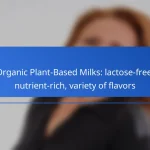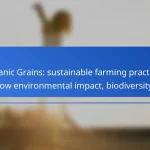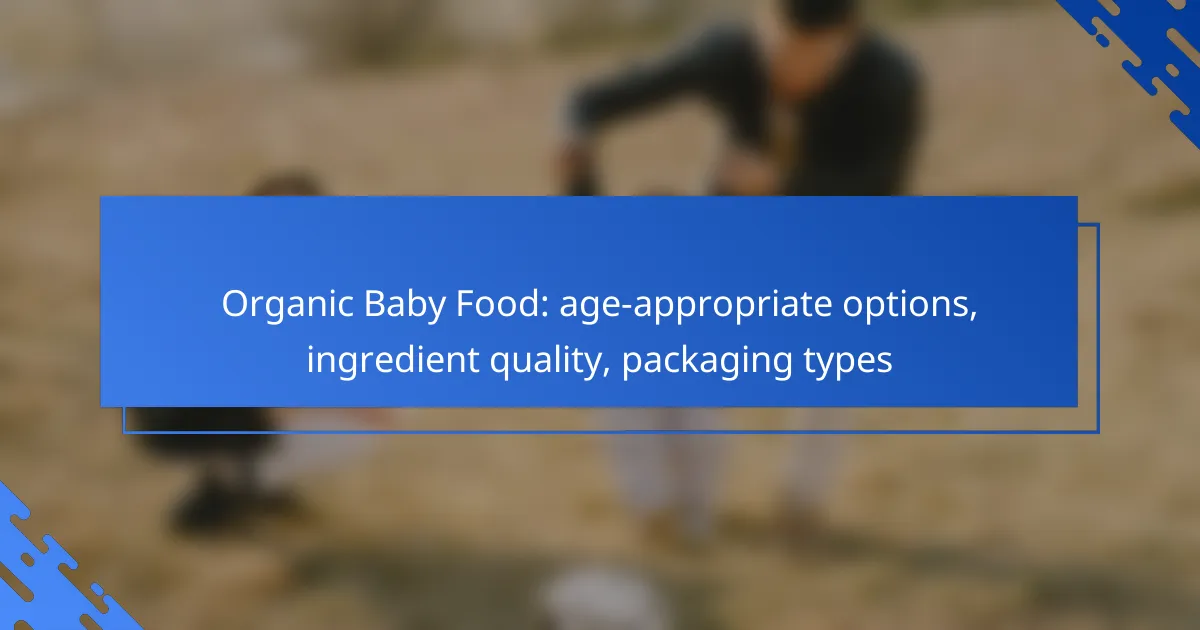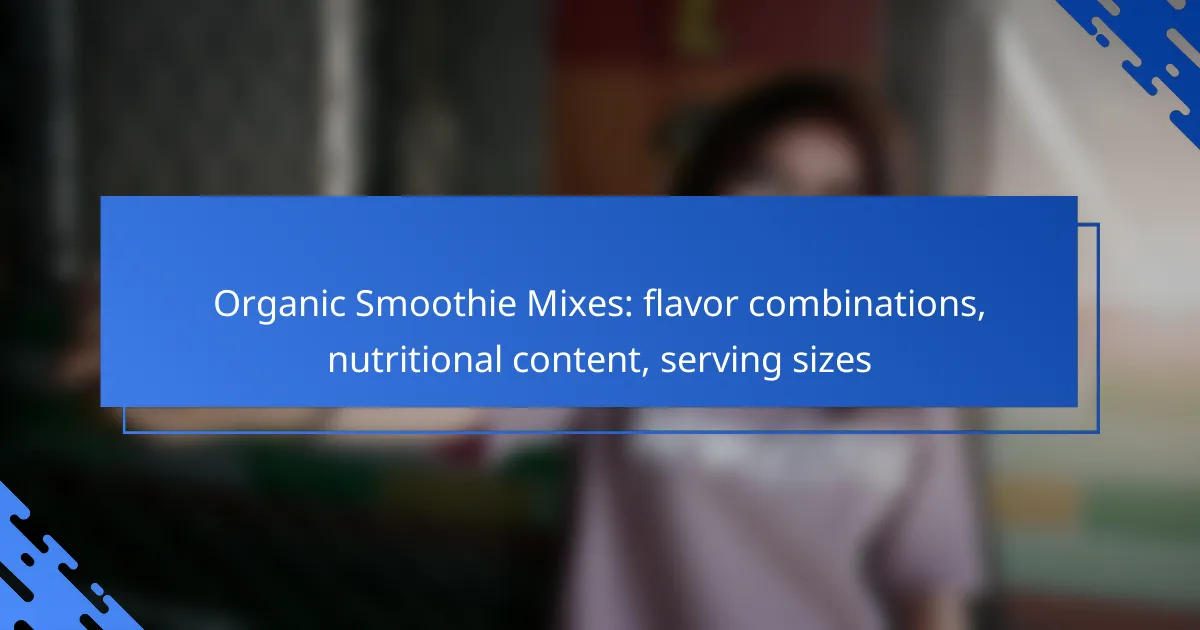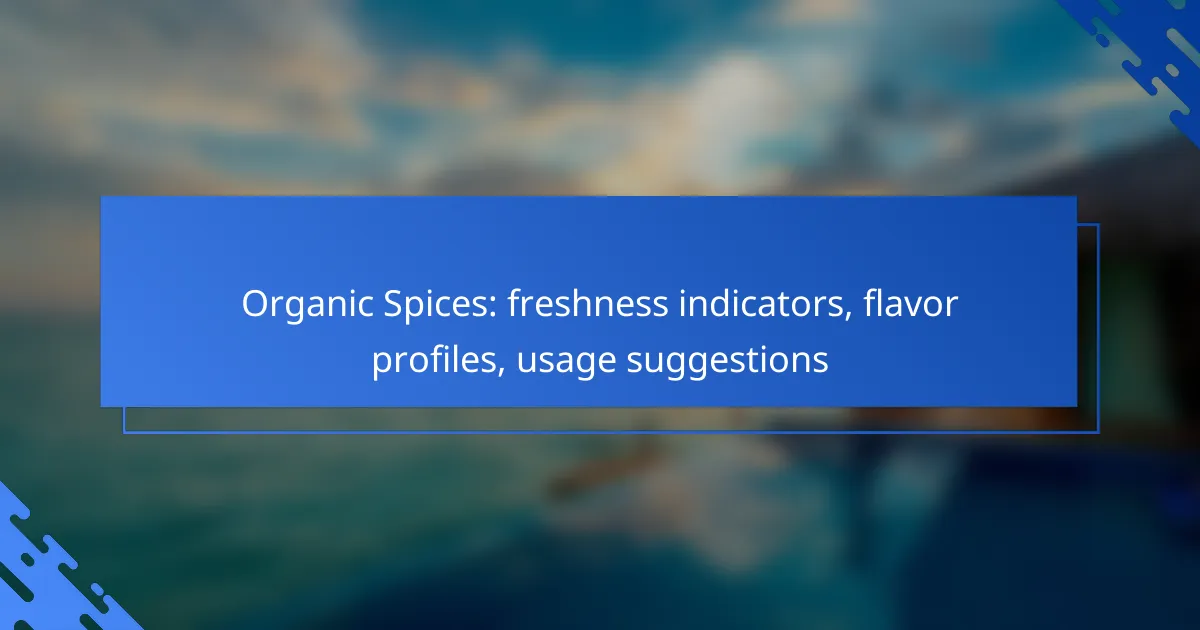Choosing the right organic baby food is essential for supporting your child’s growth and development at different stages. Infants thrive on purees and single-ingredient options, while toddlers can enjoy soft finger foods and mixed meals. It’s important to assess ingredient quality by looking for certifications and natural ingredients, and to consider the various packaging types available, such as glass jars and pouches, which offer convenience and freshness.

What are the best organic baby food options for different ages?
The best organic baby food options vary by age, focusing on developmental needs and dietary requirements. For infants, purees and single-ingredient foods are ideal, while toddlers benefit from soft finger foods and mixed meals.
6-12 months: Purees and single-ingredient foods
For babies aged 6 to 12 months, organic purees and single-ingredient foods are the best choices. These options help introduce new flavors and textures while minimizing the risk of allergens. Common choices include organic sweet potato, peas, and apples.
When selecting purees, look for products that contain no added sugars or preservatives. Homemade purees can also be a great option, allowing parents to control ingredient quality and freshness.
12-24 months: Soft finger foods and mixed meals
As babies transition to 12-24 months, soft finger foods and mixed meals become essential for encouraging self-feeding. Organic options like soft-cooked carrots, avocado, and small pieces of chicken provide essential nutrients while promoting motor skills.
Parents should aim for a variety of flavors and textures to keep meals interesting. Be mindful of portion sizes and avoid choking hazards by cutting foods into small, manageable pieces.
24+ months: Whole foods and family meals
For children over 24 months, whole foods and family meals are appropriate as they can enjoy a wider range of flavors. Organic options such as whole grains, fruits, vegetables, and lean proteins should be incorporated into daily meals.
Encouraging family-style meals can help children develop healthy eating habits. Make sure to include a variety of colors and textures on the plate to keep meals appealing and nutritious.
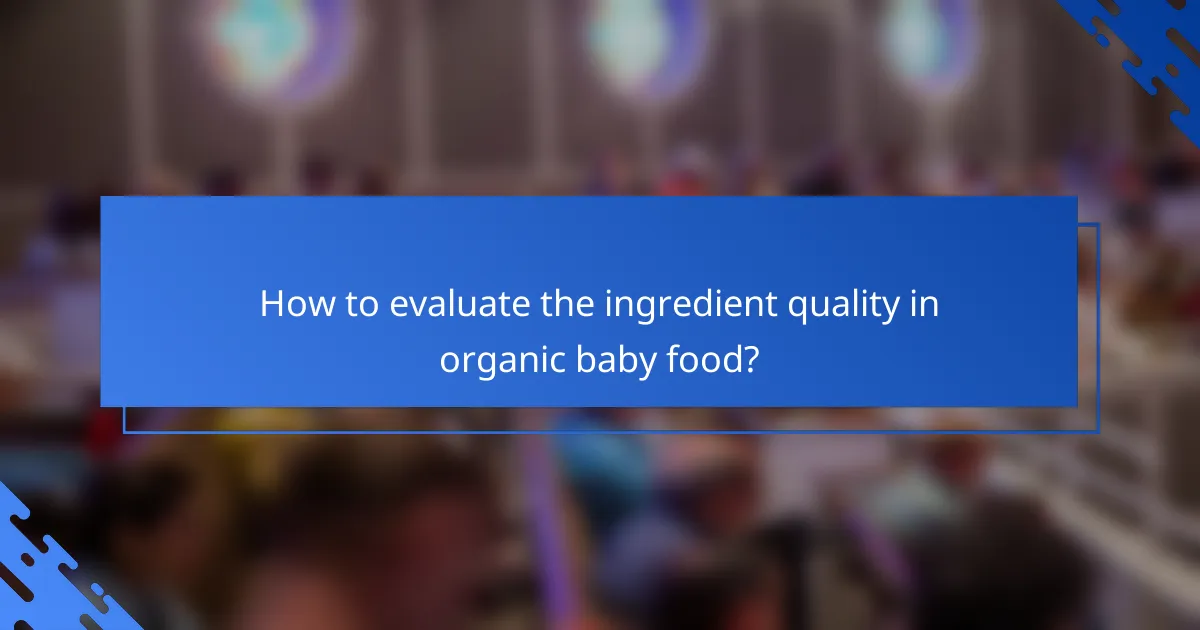
How to evaluate the ingredient quality in organic baby food?
To evaluate the ingredient quality in organic baby food, focus on certifications, ingredient sourcing, and the presence of additives. High-quality organic baby food should prioritize natural ingredients and transparency in labeling.
Look for USDA Organic certification
USDA Organic certification ensures that the baby food meets strict federal guidelines regarding organic farming practices. This certification indicates that the ingredients are grown without synthetic pesticides, fertilizers, or genetically modified organisms (GMOs).
When selecting organic baby food, check for the USDA Organic seal on packaging. This label guarantees that at least 95% of the ingredients are organic, providing peace of mind about the food’s quality.
Check for non-GMO ingredients
Non-GMO ingredients are crucial for parents who want to avoid genetically modified organisms in their child’s diet. Look for products that explicitly state they are non-GMO, as this indicates a commitment to natural sourcing.
Many brands offer non-GMO certifications, which can be found on the packaging. This assurance helps ensure that your baby is consuming food made from ingredients that have not been genetically altered.
Assess for added sugars and preservatives
Added sugars and preservatives can detract from the nutritional value of organic baby food. Ideally, choose products that contain no added sugars and minimal preservatives to support healthy development.
Review the ingredient list carefully; look for natural sweeteners like fruit purees instead of sugar. Avoid products with long ingredient lists filled with chemical names, as these may indicate the presence of unnecessary additives.
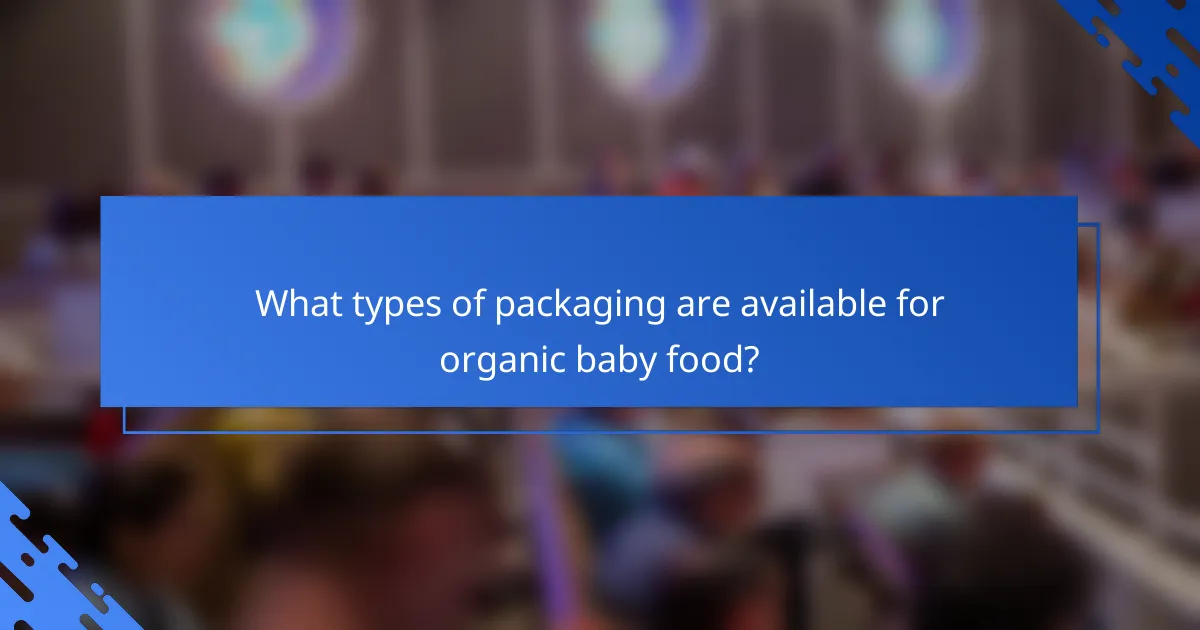
What types of packaging are available for organic baby food?
Organic baby food comes in various packaging types, each offering unique benefits tailored to different needs. The most common options include glass jars, pouches, and bulk containers, each catering to factors like freshness, convenience, and cost-effectiveness.
Glass jars for freshness and safety
Glass jars are a popular choice for organic baby food due to their ability to preserve freshness and prevent contamination. They are non-toxic and do not leach harmful chemicals, making them a safe option for infants.
When selecting glass jars, look for those that are BPA-free and have airtight seals to maintain quality. They are often available in single-serving sizes, which can help with portion control and reduce food waste.
Pouches for convenience and portability
Pouches are designed for on-the-go feeding, making them a convenient option for busy parents. They are lightweight, easy to carry, and typically feature a resealable cap, allowing for multiple servings without spoilage.
However, it’s essential to check the ingredient list, as some pouches may contain added sugars or preservatives. Opt for pouches that emphasize organic ingredients and minimal processing to ensure the best nutrition for your baby.
Bulk containers for cost-effectiveness
Bulk containers are an economical choice for families looking to save on organic baby food costs. These larger packages often provide a lower price per serving compared to individual jars or pouches.
While bulk options can be more budget-friendly, ensure that you store them properly to maintain freshness. Consider transferring smaller portions into airtight containers to avoid spoilage after opening. Always check for expiration dates and consume the food within a reasonable timeframe to ensure safety and quality.

What are the benefits of choosing organic baby food?
Choosing organic baby food offers several advantages, including reduced exposure to harmful chemicals and potentially higher nutritional value. Parents often select organic options to ensure their infants receive the healthiest start possible.
Reduced pesticide exposure
Organic baby food is produced without synthetic pesticides and herbicides, which can be harmful to infants. This reduction in chemical exposure is particularly important for babies, whose developing bodies are more sensitive to toxins.
When selecting organic baby food, look for products certified by recognized standards, such as the USDA Organic label in the United States or EU Organic in Europe. These certifications ensure that the food meets strict guidelines for pesticide use.
Higher nutrient content
Many studies suggest that organic fruits and vegetables may contain higher levels of essential nutrients compared to their non-organic counterparts. This can include increased vitamins, minerals, and antioxidants, which are crucial for a baby’s growth and development.
While the nutrient differences can vary by product, choosing organic baby food can be a simple way to increase the likelihood of providing your child with nutrient-rich options. Look for brands that emphasize whole ingredients and minimal processing.
Better for the environment
Organic farming practices are designed to be more sustainable and environmentally friendly. These methods often promote biodiversity, improve soil health, and reduce pollution from chemical runoff.
By choosing organic baby food, parents can support agricultural practices that are less harmful to the environment. This choice contributes to a healthier planet for future generations, aligning with many families’ values regarding sustainability.

How to choose the right organic baby food brand?
Choosing the right organic baby food brand involves evaluating several key factors, including brand reputation, nutritional content, and ingredient sourcing. Prioritize brands that align with your values and meet your baby’s dietary needs.
Research brand reputation and reviews
Start by looking into the brand’s reputation through customer reviews and ratings. Websites like Consumer Reports or parenting forums can provide insights into other parents’ experiences with specific products.
Check for certifications, such as USDA Organic, which indicate adherence to strict organic farming standards. Brands with a strong reputation often have transparent practices and positive feedback from users.
Compare nutritional information
When comparing organic baby food, examine the nutritional labels closely. Look for options that are rich in essential nutrients like iron, vitamins, and healthy fats, which are crucial for your baby’s growth.
Consider the age-appropriateness of the food. For instance, purees are suitable for younger infants, while older babies may benefit from more textured options. Aim for products with minimal added sugars and preservatives.
Evaluate sourcing and transparency
Investigate where the ingredients are sourced. Brands that provide clear information about their sourcing practices are often more trustworthy. Look for those that use locally sourced ingredients when possible.
Transparency in labeling is essential. Brands that disclose their ingredient origins and production methods help you make informed choices. Avoid brands that are vague about their ingredient sourcing or manufacturing processes.

What are the common misconceptions about organic baby food?
Many parents believe that organic baby food is always healthier and safer than conventional options, but this isn’t always the case. Misconceptions often stem from misunderstandings about ingredient sourcing, nutritional value, and the presence of additives.
Age-appropriate options
Choosing age-appropriate organic baby food is crucial for your child’s development. For infants, pureed fruits and vegetables are ideal, while older babies can handle more complex textures and flavors, including grains and proteins. Always check the packaging for age recommendations to ensure safety and nutritional adequacy.
As babies grow, they can transition to organic snacks and meals that include a variety of ingredients. Look for options that are specifically labeled for their age group, such as Stage 1 for purees and Stage 2 for more textured foods.
Ingredient quality
Ingredient quality in organic baby food is often a primary concern for parents. Organic foods must meet strict standards, which generally prohibit synthetic pesticides and fertilizers. However, not all organic baby foods are created equal; some may still contain added sugars or preservatives.
When selecting organic baby food, read labels carefully. Look for products with minimal ingredients, ideally just the fruits, vegetables, or grains themselves. This ensures that your baby is getting the best nutrition without unnecessary additives.
Packaging types
Organic baby food comes in various packaging types, including jars, pouches, and tubs. Each type has its advantages and disadvantages. For example, pouches are convenient for on-the-go feeding but may encourage overconsumption due to their easy-to-squeeze design.
Glass jars are often perceived as more eco-friendly and can be reused or recycled, but they may be heavier and less portable. Consider your lifestyle and feeding habits when choosing the packaging type that best suits your needs.
